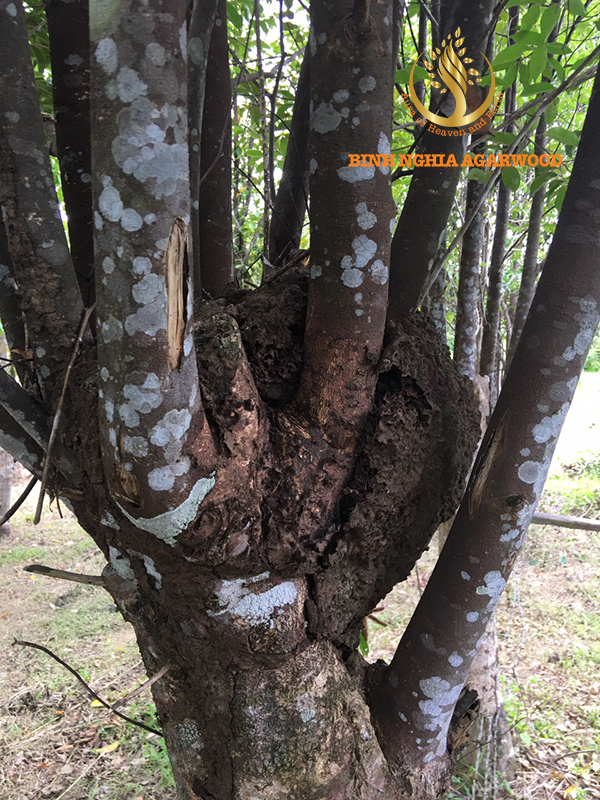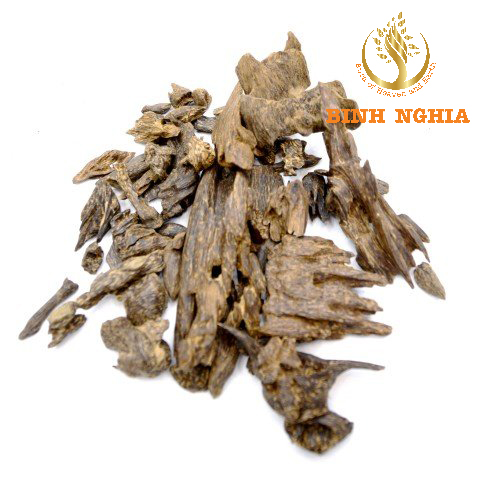Natural conditions are suitable for growing Agarwood. Is it possible to develop agarwood project in Arab countries?
.jpg)
Agarwood trees, belonging to the Aquilaria species, have specific climate and environmental requirements for optimal growth and the production of Agarwood.
Climate:
Temperature: Agarwood trees prefer a tropical to subtropical climate with temperatures ranging between 25°C to 35°C (77°F to 95°F). They can tolerate both high temperatures and slight variations in temperature throughout the year.
Rainfall: Adequate rainfall is essential for the growth of Agarwood trees. They thrive in regions with an annual rainfall of 1,500 to 3,000 millimeters (59 to 118 inches). However, they also require a dry period to stimulate resin production.
Humidity: Agarwood trees prefer high humidity levels ranging between 70% and 90%. This moist environment is beneficial for their growth and resin formation.
Soil:
Well-drained Soil: Agarwood trees thrive in well-drained soils with good water retention capacity. Sandy loam and loamy soils are considered suitable for their growth. Excessive waterlogging can be detrimental to the trees.
pH Level: Agarwood trees generally prefer slightly acidic to neutral soils, with a pH range of 5.5 to 7.5. This pH range allows for better nutrient absorption.
Sunlight:
Partial Shade: Agarwood trees prefer partial shade, as excessive direct sunlight can be detrimental to their growth. The presence of surrounding trees or a canopy cover helps provide the desired light intensity.

Altitude:
Agarwood trees can grow at different altitudes depending on the specific species. They are found at elevations ranging from sea level up to approximately 1,000 meters (3,280 feet) above sea level. However, some species can tolerate higher altitudes.
Environmental Factors:
Air Quality: Agarwood trees thrive in areas with good air quality. Pollution and high levels of air contaminants can adversely affect their growth and resin production.
Biotic Factors: Agarwood trees have a symbiotic relationship with certain fungi. These fungi infect the tree, triggering a natural defense response that leads to the formation of Agarwood. Therefore, the presence of compatible fungal species in the environment is crucial for Agarwood production.
It's important to note that the cultivation of Agarwood trees requires careful management and expertise. Agarwood cultivation often involves specific techniques, such as inoculation with fungi, to induce resin formation. Additionally, sustainable practices and conservation efforts are necessary to protect wild Agarwood populations and ensure the long-term viability of the species.
Understanding the climate and environmental requirements for Agarwood growth is essential for successful cultivation and sustainable production of this valuable resource.
Is it possible to grow Agarwood in Arab countries? If so, how will the quality be?
While Agarwood is not native to Arab countries, it is indeed possible to grow Agarwood in these regions with appropriate cultivation practices. However, the quality of Agarwood produced in Arab countries may differ from that of the traditional Agarwood-producing regions like Southeast Asia and the Indian subcontinent.
Climate: Arab countries have a different climate compared to the native regions of Agarwood. The climate in Arab countries is generally arid or semi-arid, with high temperatures and low humidity. Agarwood trees typically prefer a tropical to subtropical climate with higher humidity levels. Therefore, creating suitable microclimates or controlled environments, such as greenhouses or shade netting, may be necessary to mimic the preferred conditions for Agarwood growth.

Soil: Agarwood trees thrive in well-drained, loamy soils with good water retention capacity. Arab countries often have sandy or desert soils, which may require soil improvement techniques such as adding organic matter and implementing irrigation systems to provide sufficient moisture and nutrients for the trees.
Species Selection: Choosing appropriate Agarwood tree species for cultivation in Arab countries is crucial. Some Agarwood species may be more adaptable to arid conditions than others. Consulting with experts or local agricultural authorities can help determine the most suitable species for the specific climate and soil conditions of the region.
Cultivation Techniques: Successful Agarwood cultivation in Arab countries may require the application of specific techniques such as inoculation with fungi to induce resin formation. These techniques can mimic the natural processes that occur in Agarwood-producing regions. Additionally, the use of irrigation systems, shading, and appropriate fertilization practices can aid in providing optimal conditions for tree growth.
Quality Considerations: The quality of Agarwood produced in Arab countries may differ from that of traditional Agarwood-producing regions due to variations in climate, soil, and cultivation practices. The aroma and resin content of Agarwood can be influenced by environmental factors. The unique qualities and characteristics of Agarwood from Arab countries can contribute to the development of distinct regional profiles, which may appeal to certain markets or preferences.
It is worth noting that Agarwood cultivation in Arab countries is a relatively new endeavor, and further research and experimentation are necessary to optimize the cultivation techniques and understand the potential quality outcomes. Collaborating with experienced Agarwood cultivators and experts in the field can provide valuable guidance for successful cultivation in Arab countries.
Overall, while growing Agarwood in Arab countries is feasible, it requires careful consideration of the climatic conditions, suitable species selection, and cultivation techniques to achieve desired results in terms of quality and yield
Other news:
• The Mystical Charm of Agarwood in Muslim Special Occasions
• Embracing the Spiritual Essence: The Significance of Agarwood During Ramadan
• Oud Mastery: The Craftsmanship of Vietnamese Agarwood in Arab Traditions
• Agarwood's Artistic Allure - ex
• What is CITES and why does Agarwood trade require CITES?
• Challenges Related to Agarwood. How to develop and get rich from Agarwood business
• Discuss the economic aspects of the agarwood trade in the Middle East
• Current issues of agarwood exploitation and conservation
• How is Agarwood Utilized Today?
• Applications of agarwood in modern industries
• Delving into the Spiritual Significance - What Does Agarwood Symbolize?
• Tracing the Rich History of Agarwood. Why is Agarwood So Revered?
• The Kyara - KyNam - Kinam by Binh Nghia Agarwood
• Unlocking the Mysteries of Agarwood - How is Agarwood Produced?
• Threats Looming Over Agarwood Trees: A Call to Conserve
• Agarwood: The Sacred Scent Uniting Cultures - Symbolism and Rituals Explored!
• From Ancient Remedies to Timeless Fragrances: Exploring Agarwood's Cultural Journey
• Unveiling the Mystical Power of Agarwood: How Does It Differ Across Religions?
• The Role of Fungal and Bacterial Infections in Resin Formation
• The factors that form Agarwood and the production process of Agarwood
• How is agarwood formed in the natural environment?
• Explanation of Aquilaria's Connection to Agarwood Production
• Different Species within the Aquilaria Family
• Introduction to the Aquilaria Genus
• Free health check and medicine distribution for people in Son Tay district.
• Distribution of agarwood in the world and differences in scent of agarwood in different regions.
• Agarwood and its value in culture and human life
• Historical References to Agarwood: A Fragrant Journey through Time
• Confused when determining the value of Natural Agarwood through "Agarwood Age"
• Agarwood Chip Market Analysis, Status and Business Outlook 2023 to 2030
• The export situation of Agarwood in Vietnam
• Use of Agarwood in Islamic Culture
• Using Agarwood in Buddhist Culture
• The situation of using Agarwood in Kuwait
• The situation of using Agarwood in Qatar
• The situation of using Agarwood in UAE
• The situation of importing and exporting Vietnamese agarwood to the Gulf countries
• The situation of importing and exporting Vietnamese agarwood to Saudi Arabia
• Overview of knowledge of agarwood (part 1)
• Plants of The time: Agarwood
• Agarwood facts and health benefits
• Agarwood in Ha Tinh – one of the best agarwood in Vietnam?
• Agarwood incense and things to know?
• One billion riyals, the volume of sales of the Oud market.
• Oud...a long tradition in the Middle East.
• Oud consumption volume in the Gulf
• With the finest types of oud.. This is how Eid is received in the Gulf
• Learn about the types of oud in the Gulf
• The easiest way to prepare incense at home
• Saudi scents: What are oud perfumes?
• Types of incense between natural and unnatural. How do you discover the difference?
• Incense entered the Arabian Peninsula
• The secret of incense and oud
• Oud... from the path of incense to the master of oriental perfumes
• Why is the oud used in the Gulf society?
• High quality Vietnamese Oud chips
• Oud and its impact on the perfume industry, especially in the Arabian Gulf
• Health Benefits Of Agarwood (Oud) Oil
• Feng Shui Agarwood attracts fortune and brings good luck to the family
• 6 ways to use pure Agarwood essential oil
• Agarwood - A fragrance created from heaven!
• Two rare compounds have been detected in agarwood essential oil by hydrolysis
• Agarwood pieces. Introduction and instructions on how to burn Agarwood pieces
• 100% pure Agarwood powder and how to steam it?
• How to distinguish Muhassan Oud from the Natural Oud at first sight
• The difference between a natural and Muhassan Oud
• Al-Maroki Oud: Learn what the Al-Maroki Oud is and its best types
• Where can I buy real Agarwood in Vietnam?
• How Vietnam agarwood affirms the No.1 position worldwide
• Agarwood Chips Incense High Oil Rare Agarwood from Oud Vietnam Natural Agarwood Grade A
• Wholesale Vietnamese agarwood chips
• Go to the forest to find Agarwood
• What is sinking Agarwood (Oud)? Why is the submerged Agarwood bracelet so valuable?
• Misunderstandings and not fully understood about Agarwood(Oud) oil pressed
• Difficult journey to find Tram Huong
• AGARWOOD CHIPS FROM OUD VIETNAM HIGH QUALITY
• Agarwood Crassna – The special aquilaria tree in Asia
• The difference of enjoying bass in 4 Asian countries
• Agarwood (Oud) Carving. Meaning of Using it?
• How to make a simple Agarwood (Oud) cone
• Agarwood (Oud) – An Aroma Made in Heaven!
• The following species of Agarwood produce Agarwood
• Is the best Agarwood (oud) of the world in Vietnam?
• Frequent misunderstanding about oud (agarwood)
• Difficult journey to find agarwood in forest
• Can humans create billions of dong worth of Ky Nam?
• How to buy high quality agarwood incense?
• Benefits of Agarwood oil (Oud oil)
• How to choose Agarwood bracelet that matches feng shui
• The use of Agarwood in health of life and feng-shui
• Burning Agarwood (oud): The effect and meaning of a custom
• Agarwood (OUD) is one of nature's treasures
• Why Agarwood is a present from Mother Nature?
• Why Agarwood Is So Expensive?
• What's compound in agarwood (oud) oil?
• Agarwood/Oud incense stick materials – from 1005 natural ingredients